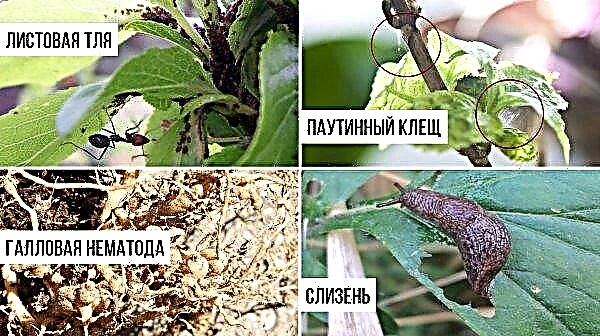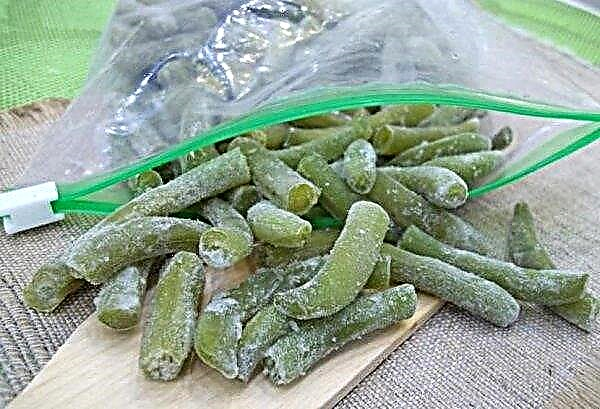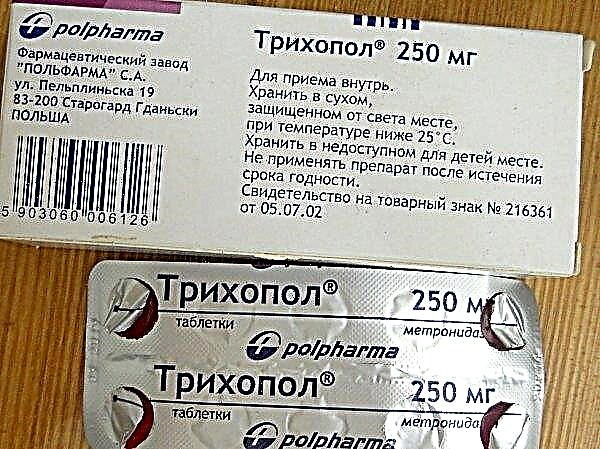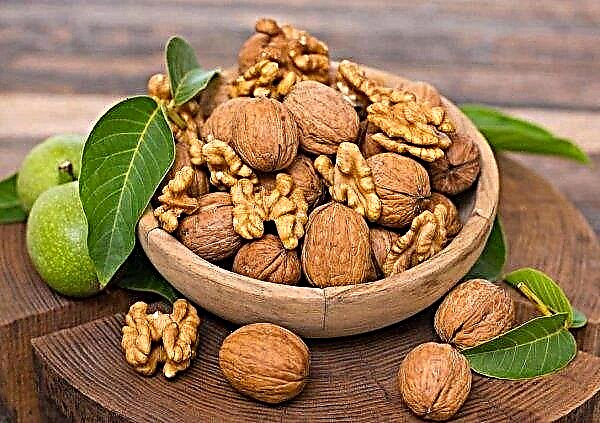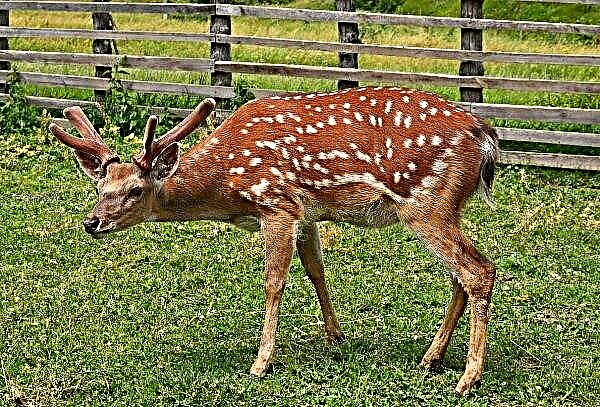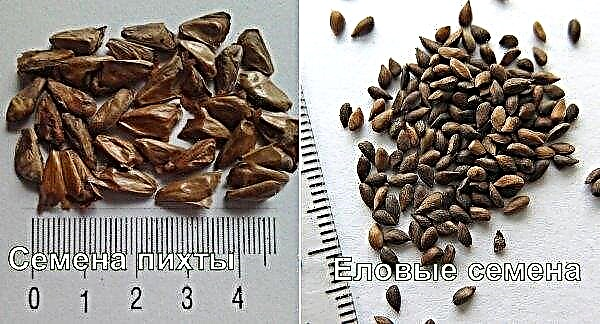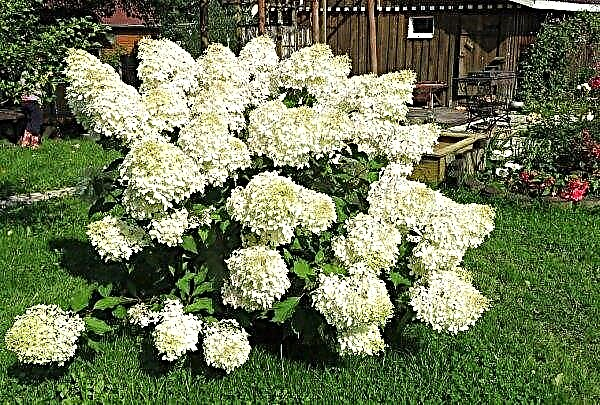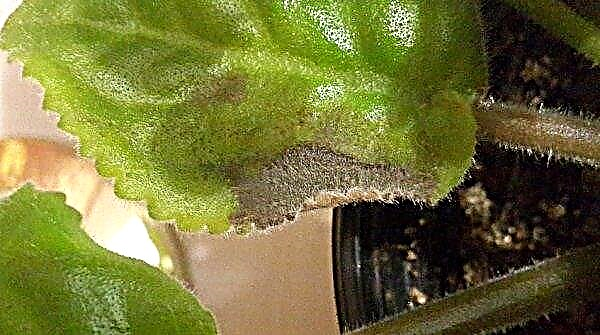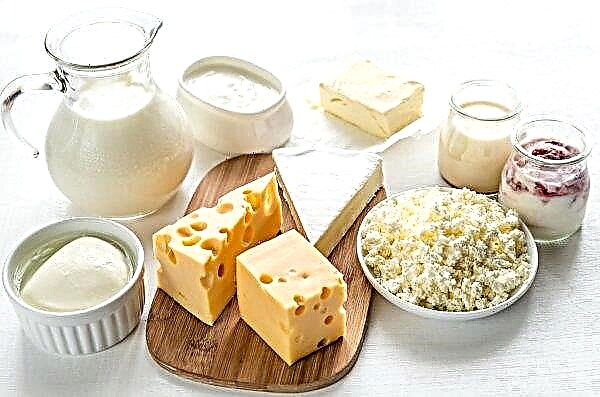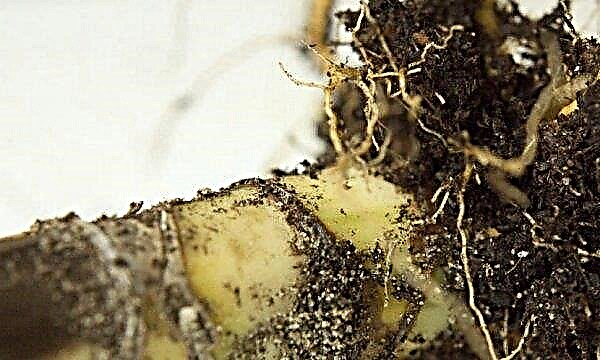Pear and apple tree are considered, perhaps, the most typical representatives of fruit trees in most of the territory of Russia, Ukraine and Belarus. However, despite this circumstance, and a wide variety of varieties and hybrids, few varieties of pears can maintain their taste and marketability until the new year. One of these varieties is Yakovlevskaya pear.
Description pears varieties Yakovlevskaya
Although Rosaceae are the most popular fruit trees in the European part of the former Soviet Union, there are not many real winter pear varieties. The fact is that the culture, for the normal maturation and accumulation of sugars, requires a certain amount of sunny days.
The lack of sun begins to be felt at about latitude of the northern border of Ukraine. We can say that until recently, in the most part of central Russia and the whole territory of Belarus, there were very few real winter pear varieties with good keeping quality.

The situation was decided to be corrected by specialists of one of the leading institutions in the field of genetics and selection, VNIIG and SPR named after I.V. Michurina, located in the city of Michurinsk, Tambov region. The varieties Tolgar beauty and the Daughter of Dawn were taken as the basis.
The result of the work was the breeding of several new related varieties, which, at the same time, have their own individual characteristics: Nick, Fairy, Yakovlevskaya. In the work on Yakovlevskaya directly involved breeders S.P. Yakovlev, V.V. Chivilev, N.I. Saveliev, A.P. Gribanovsky.
The year of birth, or rather the registration of the variety, is considered to be 2002, when it was included in the State Register, and recommended for breeding in the following areas:
- Belgorod;
- Voronezh;
- Kursk;
- Lipetsk;
- Oryol;
- Tambov.
In addition to the regions indicated in the register, the variety grows well and gives a crop much to the north, up to the Leningrad region.
Tree description
A tree of medium height can grow up to 8.5–9.5 m. The type of rootstock primarily affects the height indicators. During the season, the pear can grow by 24-28 cm, and be distributed in width by 14-16 cm. The crown of the tree has a typical shape resembling a pyramid, the density of greens is medium.

Straight brown shoots are bare, not thick. A sheet of the correct form and color, the upper side is cast in gloss. The contour is cut with small teeth. The trunk is covered with a large number of lentils. The kidneys are medium in size, shaped like a cone. Fruiting is predominantly mixed, as pears are born on branches of all types.
Fruit Description
The fruits are typical for the form of the species, they have an attractive appearance and considerable weight - 115-215 g. The pear is covered with a peel having a smooth structure, not very thick. Tactile sensations, when touching the surface of the fetus, slightly resemble light oiliness and plaque, which protects against the aggressive influence of the external environment.
The average size of the fetus is:
- diameter - 5.5-6.5 cm;
- length - 9.5-11 cm.
In the second half of September, when the pear can already be eaten, it is mostly solid green. After she hangs on a branch for 3-4 weeks, her color turns yellow with a red side, to which the sun was most often directed.
Small seeds are in enclosed chambers. The pulp is sweet, juicy medium density, a delicate cream color. Experts rate the taste qualities at 4.5, where 5 is the maximum number of points.
The fruits of Yakovlevskaya contain:
- sugar - 11.55%;
- acids - 0.38%;
- solids - 12.75%;
- vitamin P - 151 mg / 100 g;
- Vitamin C - 9.85 mg / 100 g.
They have a sweet taste with a slight sour taste, the smell is typical of pears, with a subtle floral trail.
Did you know? The homeland of the pear is the southern part of Asia, where it still grows in the wild. About three thousand years ago, Europe found out about this tree, where it successfully took root. But America met the fruit a little over four hundred years ago.
Variety Characteristics
Below we dwell on the main characteristics of the pear variety Yakovlevskaya.
Disease and pest resistance
Yakovlevskaya has good immunity, it is quite resistant to many fungal diseases, which is especially important, to entomosporosis and scab.

Drought and winter hardiness
The strength of the variety can be considered its frost resistance., which exceeds the average of typical varieties grown in the middle lane. Withstands frosts to -35 ° C. But the variety tolerates drought worse than severe frosts.
Pollination
The variety can bear fruit on its own, however, it is still better to have a pear nearby, blooming at about the same time. If the pear is grown for its own use, not for sale, there is no need for a pollinator: the yield of the tree is high, and it will be enough for the personal needs of the average family.
Timing of flowering and ripening
A tree blooms in late April and first half of May. Although Yakovlevskaya is officially considered a winter variety, it is sometimes referred to as autumn variety. The reason for this is the maturity of the crop, which falls in September-October.

At this time (the second or third decades of September), it is already possible to feast on the harvest, however, the practice of leaving the fruit to pour, picking sugar, and harvesting in mid-October has become widespread. By this time, the pear becomes more juicy and acquires a saturated color.
Important! Pear Varieties Yakovlevskaya begins to bloom late, the first harvest will have to wait about five years.
Productivity
Yields can also be attributed to the strengths of the variety. For agro-industrial enterprises, the norm is about 177 kg / ha. A tree aged 10 years is capable of bearing up to 1/2 centner of succulent fruits.
Transportability
Yakovlevskaya has good transportability and keeping quality: without making any efforts for storage, you can serve a New Year's table with the fruits of excellent commercial quality. In the same case, if there are all conditions for storage (temperature, humidity), the pear can lie down to six months.

Advantages and disadvantages of the variety
- Yakovlevskaya has several advantages, among which it is necessary to highlight:
- high frost resistance;
- excellent taste;
- excellent rates of storage and transportability;
- developed immunity, fairly good resistance to diseases and pests.
Although the variety is relatively young, but it has already been studied enough by both professionals and amateur gardeners. As a result, only one serious drawback was discovered: thick foliage should be thinned out each year to increase the size of the pears. However, in comparison with the mass of advantages of Yakovlevskaya, such a feature can hardly be called a significant minus.
Did you know? Pear wood is very durable, which is why it is the raw material for the manufacture of furniture and musical instruments that have not been deformed for centuries. Rulers for professional draftsmen and dishes that can be washed in a dishwasher are made from this material.
Agrotechnics cultivation and care
The key to successful tree growth and subsequent fruiting is the choice of seedlings. It is best to take an annual tree, it is easier to take root and quickly adapts to new conditions.
It is better to buy a seedling in a nursery or from breeders with a reputation. The trunk should be fairly even, without knots, with healthy strong roots.
Landing time
You can land Yakovlevskaya both in autumn and spring. The exact dates depend on your region. In the fall, a tree should be planted about 4 weeks before the onset of frost. A spring pear is usually planted in the third decade of March or the first decade of April. Both winter and spring planting have their advantages and disadvantages.

If you plant a tree in the fall, and weather conditions do not let you down, it can already take root before the frost, during the winter the root system will be sufficiently strengthened. And in the spring, as soon as the snow melts and the ground begins to thaw, the tree will immediately begin to pour in juice and build up green mass, without wasting its energy on the development of roots. This circumstance contributes to early growth and earlier harvest.
On the other hand, a pear planted in autumn can fall under early frosts. Snowless winters and rodents also pose a threat. All these circumstances can lead to the fact that a tree, especially a young one, will not be able to survive the winter. So you have to make a decision when to plant a pear, relying only on your own ideas and the advice of experienced gardeners.
Site selection and well preparation
The place should be chosen in such a way that it is fenced on the north side, located on a small elevation, or on a gentle slope (towards the south), open to sunlight. Light loam with neutral acidity is most suitable for culture.

Such a substrate is able to maximize the potential of the variety. Peat, compost or river sand should be added to clay soil. It is advisable to add peat or compost to the sandy soil. You should carefully study the area for groundwater - they should be no closer than one and a half meters from the surface of the earth.
If a pear is planted in the fall, you need to pay attention to the “neighbors”: crops with a surface root will make a quite acceptable neighborhood for the tree, which cannot be said about corn, sunflower and other crops with a high stem.
The place chosen for planting is dug in the fall, the following composition is made for each meter of area:
- compost - 1 bucket;
- superphosphate - 4 tbsp. l .;
- potassium salt - 2 tbsp. l
2-3 weeks before the estimated date of planting, you should dig a hole, if this is done later, it can settle, which will negatively affect the survival rate of the tree. The approximate dimensions of the pit are 100 × 75 × 75 cm. When digging, lay the topsoil separately, you will need it to prepare the soil mixture, which you will fill up the pit.
The approximate dimensions of the pit are 100 × 75 × 75 cm. When digging, lay the topsoil separately, you will need it to prepare the soil mixture, which you will fill up the pit.
For the mixture, per 1 bucket of topsoil you will need:
- humus - 1 bucket;
- potassium sulfate - 40 g;
- superphosphate - 200 g.
The bottom of the pit is covered with drainage, on which soil is laid to 1/4 of the depth of the pit. If the seedlings will be planted in the spring, after digging and applying fertilizer, you can fill the hole, in the spring you only need to remove soil from it.
Did you know? To replenish the daily fiber requirement, you need to eat only 5 pears, the daily dose of vitamins is contained in 10 fruits, the same norm of potassium - in 17 pears.
Step-by-step landing instructions
Planting itself - the procedure is quite simple, practically no different from similar procedures for other fruit trees:
- At the bottom of the pit, set a wooden stake 2-2.2 m in length so that it is on the north side of the tree.
- Make a knoll at the bottom of such a height that the root neck of the seedling after planting rises 3-5 cm at the ground level. Place the tree in a hole, distribute its root system along the slopes of the knoll.
- Fill the hole with the mixture you prepared, from time to time compacting it, tie the barrel to the stake. Pour the seedling with 30-35 liters of warm water.

Watering frequency
After planting, seedlings need to be watered daily, the first 8 days. Then the frequency of watering is reduced to 1 time per month. Watering one tree requires 30-50 liters of water - depending on the size of the pear, and how much rain falls.
Fertilizer application
In the third decade of April, the pear is sprayed twice to prevent diseases and pests: the first time - before the buds open, and again - after budding.
In the first season, fertilizers are not applied. In late spring, the tree is fed with nitrate or urea, in addition, treatment with boric acid contributes to good growth.  Starting from the second year of life, in June-July, the pear is fed with organic matter and nitrogen fertilizers. Autumn is a time of potash and phosphorus fertilizing.
Starting from the second year of life, in June-July, the pear is fed with organic matter and nitrogen fertilizers. Autumn is a time of potash and phosphorus fertilizing.
When the tree grows, tinning is carried out in spring - all greenery is mowed around, nitrogen fertilizers are applied to the soil, then it is sown with green manure (clover, legumes). This procedure positively affects the structure of the soil, helps to reduce the growth rate of weed grass.
Pest and Disease Control
For most fungal diseases, Yakovlevskaya has immunity. And although to the scab - the scourge of most of the Rosaceae, the variety has a fairly strong resistance, some diseases and pests are still a danger to Yakovlevskaya.
Rust. The leaves are covered with spots, the color of which is reflected in the name of the disease. After some time, the spots darken, acquire a rich shade of ocher. Affected fruits and leaves are removed, burned outside the garden. In the spring, before budding, spend spraying Bordeaux liquid.

Gall tick. A parasite whose length does not exceed 1/3 mm. The tick settles on buds and pears, eats them, interferes with the growth of the tree. The pear begins to wither, budding and ovary formation are noticeably reduced. The foliage that has crumbled from the tree must be removed outside the garden and burned, and the plant is treated with Acaricides of the Decis and Fufanon type in spring.
Important! The tick is thermophilic. It cannot be detected until the air temperature rises to + 10 ° C.
In addition, the following measures prevent the appearance of a tick, without the use of chemicals:
- timely fertilizer application. The osmotic pressure in the plant increases, this prevents the tick from feeding;
- regularly remove dead bark from the trunk and branches;
- remove and burn all plant residues;
- do not forget to thin out the green mass in the spring;
- remove weed, preferably throughout the garden.

Aphid. The parasite feeds on the juice of the leaves, which leads to their wilting. When plaque appears, the leaves should be treated with a solution of liquid soap in water (1:10). The folk methods of fighting aphids have proved to be quite good: spraying with decoctions of celandine, dandelion. If aphids pose a real threat, having occupied the entire tree, drastic measures are required.
For these purposes, use drugs:
- Kinmix - before the kidneys begin to swell;
- "Agravertin" - shortly before flowering;
- "Spark" - after the formation of ovaries.
In the event that an invasion of the parasite threatens the entire garden, “Fitoverm” and “Confidor” are used - very strong pesticides, which must be handled strictly in accordance with the instructions, using personal protective equipment, and treating only the affected trees.

As for the preventive measures to prevent the invasion of aphids, they are similar to those carried out to combat ticks.
Preparing landings for winter
Before the onset of cold weather, the booms are wrapped with thermal insulation, on top of cardboard and roofing felt. The whitewash of the stem and skeletal branches with lime is also practiced, so that sunlight reflected from the snow does not burn the tender young bark.
The earth around the trunk is mulched with sawdust, a layer of up to 15 cm. The seedling itself is spudded to a height of 1/3 meter, encircled with spruce branches. The branches of the tree are neatly pulled together with a soft dense cloth and tied to a stake.
Important! You can coat the trunk and lower branches of the pear with a thin layer, taken in equal parts, of manure and clay. This procedure will prevent the encroachment of rodents.
Harvesting and storage
In order to preserve the fruits longer, it is better to collect them slightly immature, but not green. They should be still hard, but sweet enough, then the pears will ripen and will be stored for a long time.
When harvesting, follow these rules:
- the pear is broken off from the branch with the peduncle;
- the fruit intended for storage should not have any defects or damages;
- harvest in dry weather;
- if the pear has been exposed to frost, it must be eaten or processed immediately, it will not be stored for a long time.

After the crop is harvested, it must be carefully inspected, strong, whole, unripe fruits to be stored, the rest sent for processing or eat. Pears with minimal signs of rotting should never be stored with the rest: you can spoil the entire batch.
To store the crop use a cellar, basement or refrigerator. A dry basement or cellar is best suited, with a temperature of about + 2 ° C and a humidity of 80-85%. It is recommended before storing the crop, to fumigate the room and the container with sulfur.
There should not be any other vegetables and fruits nearby; find a separate corner for pears in the basement. You can store the crop in boxes of dry sand, it absorbs excess moisture, which helps to increase the shelf life.
Important! In the spring, before the buds swell, it is necessary to cut off the dry, damaged branches, remove all young growth, thin out the crown. Thanks to this procedure, the fruits will grow larger.
Fruits are laid in wooden boxes with the stalks up. Periodically, pears should be inspected and removed those that begin to deteriorate.
Yakovlevskaya has wonderful taste and good presentation. In addition, the variety has excellent indicators of keeping quality, which, quite well, allows you to decorate your New Year's table with them, and possibly enjoy it in the spring.

